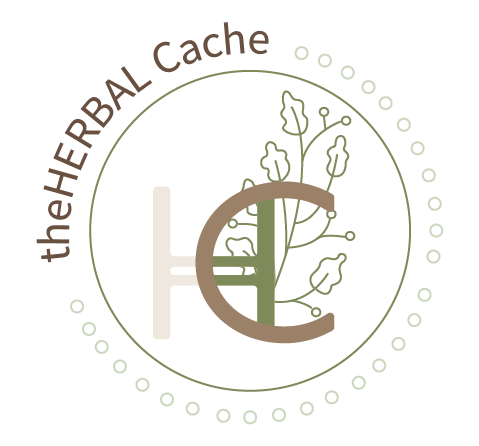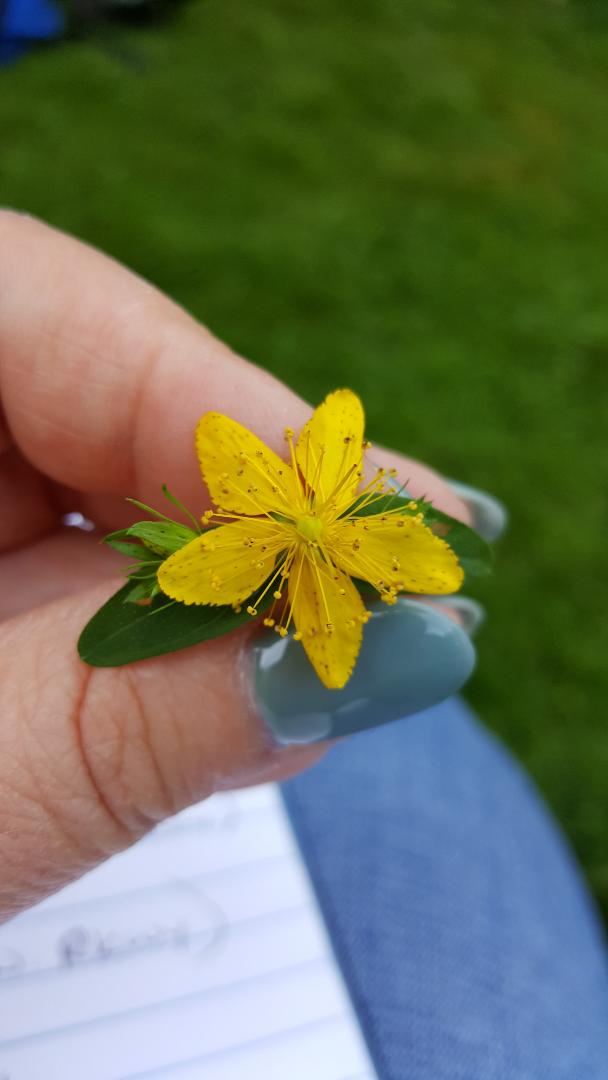Creeping Charlie – not so creepy
Glechoma hederacea
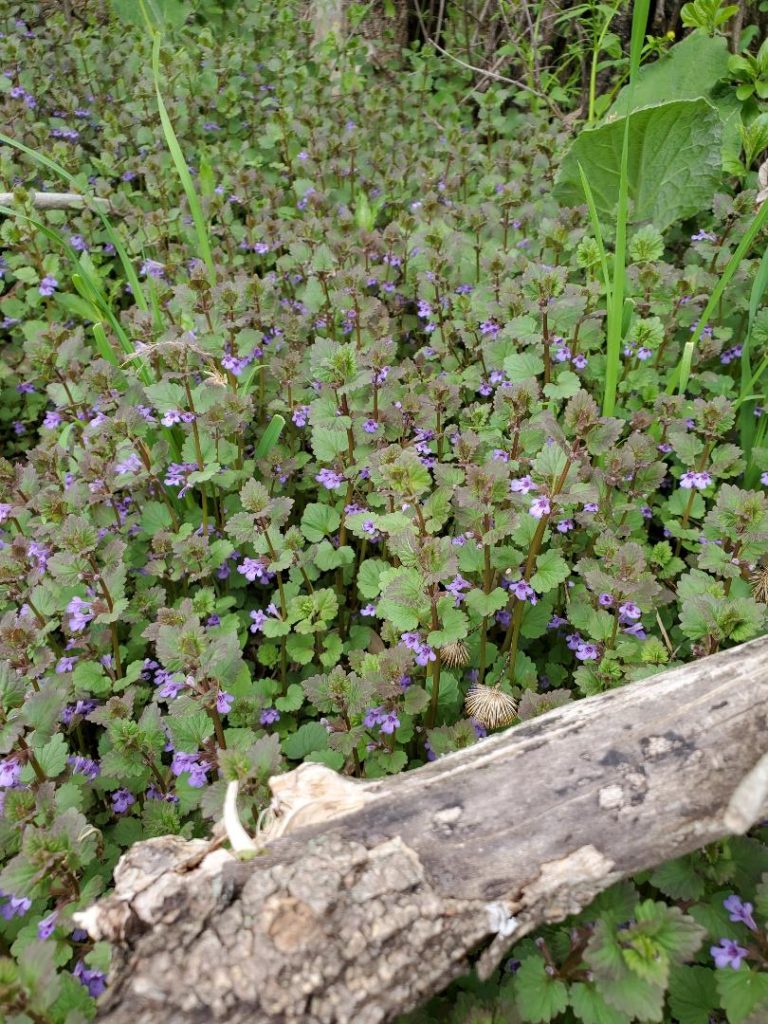
Earth Crown
Creeping Charlie, also known as ground ivy, has had a bad rap for quite some time. Because it “creeps” up in lawns and yards, in places where it is not wanted, it has become a nuisance for many people. Once it is established, it is very hard to get rid of.
Creeping charlie is native to Europe. European settlers brought it to North America for plant medicine and as a ground cover. It grows rapidly from seeds and spreads via stolons (creeping stems). You can find it growing in moist, shady areas.
One of my herb mentors, Lise Wolff, said “Perhaps we should restore it to its original Latin name, Corona terrae; ‘Earth Crown,’ as it is truly like a garland over the ground.”
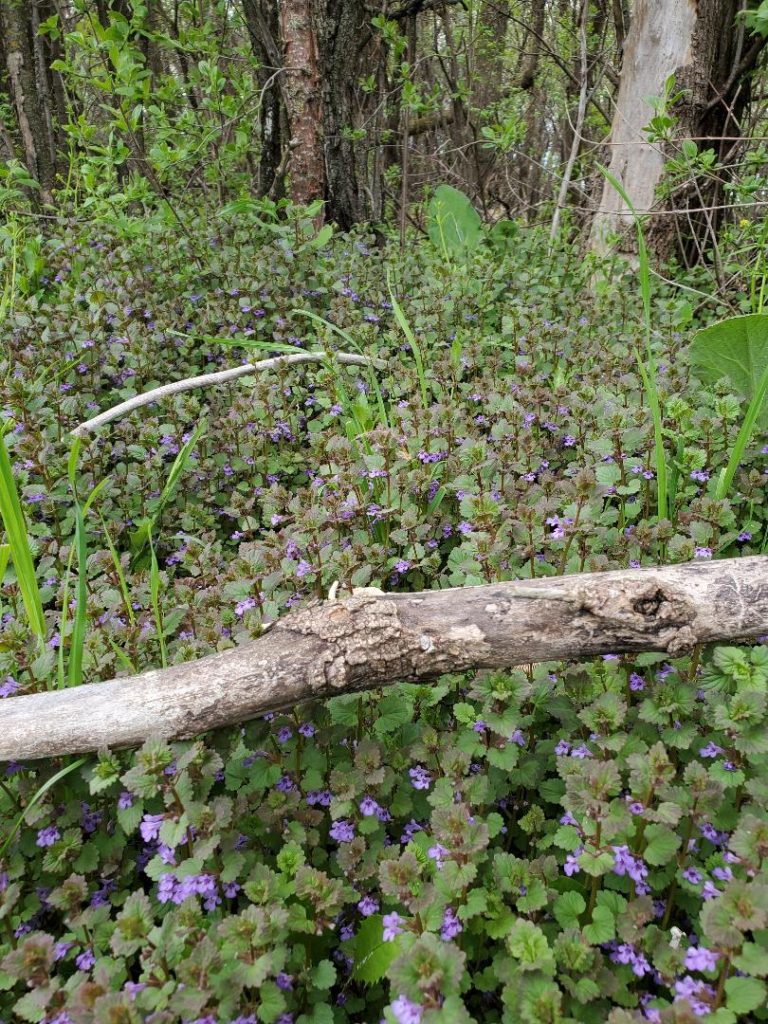
It’s edible!
This plant is part of the mint (Lamiaceae) family. The leaves have a mint-like flavor and can be tossed into salads to add extra flavor. Create a seasoning salt to put on pastas or meat dishes.
Just like spinach, the leaves can be sauteed and added to omelets, soups, rice, etc. Pair them up with dandelions and make a wild salad! Use it for seasoning meats or vegetables. It can also be found in beer recipes – check this one out, Belgium Wild Beer!
Medicinal uses
The use of this plant dates back to the first century where it was considered a panacea (cure-all). The medicinal uses for Glechoma hederacea, or creeping charlie, are as extensive as the plant itself. The list includes congestive headaches, toothache, indigestion, bloating, gas, earaches, sore throats, bronchitis, chest colds and even depression.
It also has an affinity for ear issues, such as tinnitus. Matthew Wood tells of his use of ground ivy in a case of chronic bronchitis believed to have originated years before in a middle ear infection.
Creeping charlie is becoming more well known for its ability to draw out heavy metals. It has historically been used to help with “Painter’s colic,” a variety of lead poisoning resulting from constant exposure to leaded paints. A number of fellow herbalists use it for mercury poisoning that comes from cavity fillings.
Here is a video from Spiraea Herbs, “Charlie Ain’t All Bad“, that goes over more benefits of ground ivy, or creeping charlie.
I wildcraft creeping charlie and make a tincture out of it. This way I can store it for a long time and have it available when needed. I pick the top 75% of the plant and use the stems, leaves and flowers.
Don’t forget the bees
Creeping Charlie makes an excellent nectar for the bees and other pollinators, along with other spring flowers. Look closely and you’ll see the busy little bees!
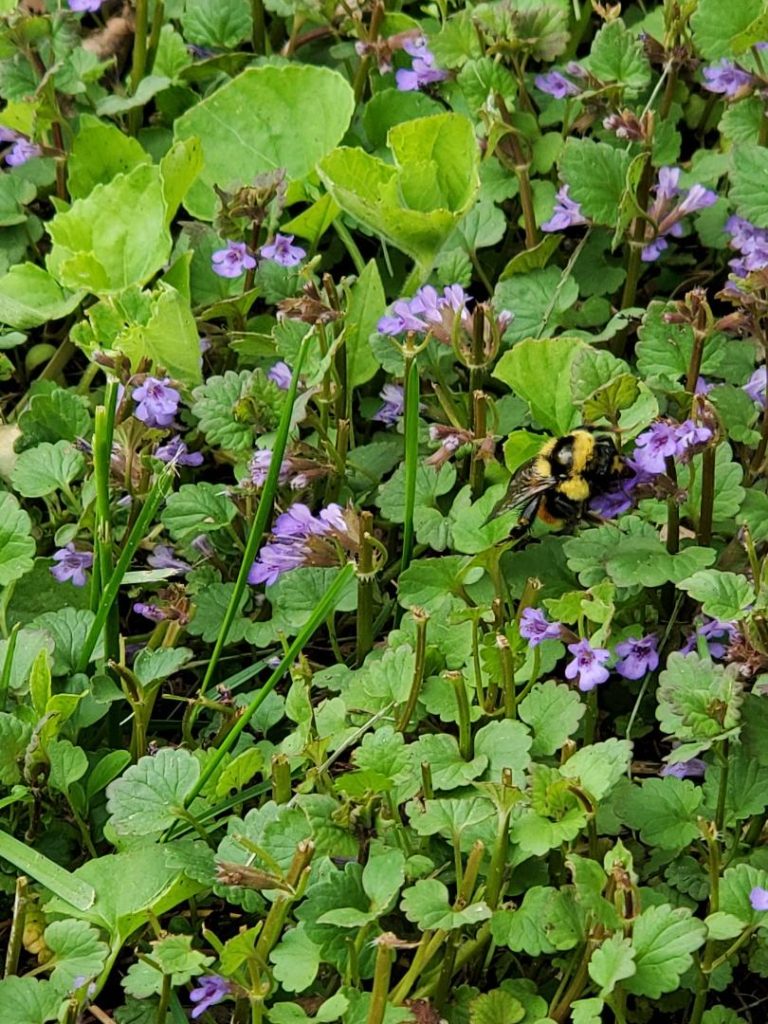
References
- https://www.ediblewildfood.com/creeping-charlie.aspx
- http://www.herbalistlisewolff.com/earthcrown.html
- http://www.lindentreeherbals.com/ground-ivy.html
- https://spiraeaherbs.ca/ground-ivy-herb-glechoma-hederacea-a-herbal-materia-medica/
